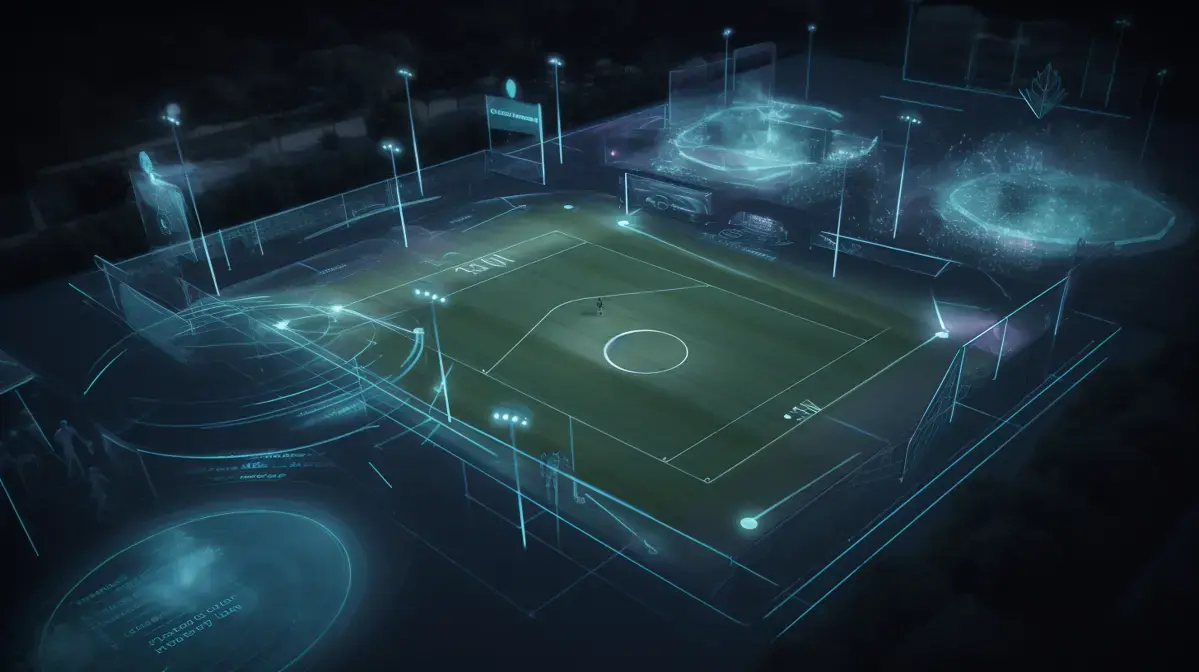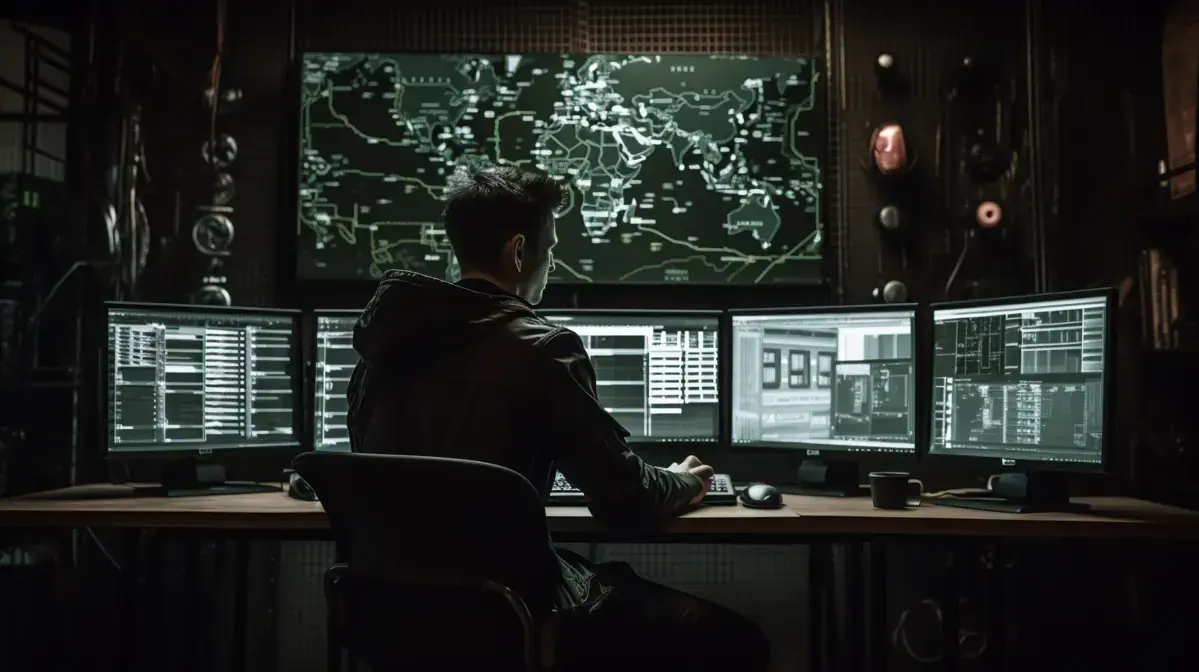Augmented Reality (AR) has revolutionized the way car manufacturers advertise and market their vehicles. By using AR technology, potential customers can experience a virtual test drive, explore different features of a car and view it in 3D from any angle. This innovative approach allows companies to create an immersive experience for consumers that traditional print or online advertisements cannot match.
One powerful feature of AR is its ability to provide users with interactive information about the vehicle they are interested in buying. For example, if someone is viewing a car through an AR app on their smartphone or tablet device, they can select specific parts of the vehicle such as tires or engine components to learn more about them by clicking on them within the simulation.
Another aspect where Augmented Reality shines compared with conventional marketing techniques is its versatility when presenting new models or accessories. Brands like Audi have already used augmented reality advertising solutions for showcasing new cars at events like Autoshow International Detroit creating even stronger connections between audience and brand – blending physical spaces with digital assets.
Overall, Augmented Reality brings numerous benefits to automotive advertising and marketing campaigns including increased engagement rates among prospective buyers along converting direct investments into ROIs faster than ever before.
Table Of Contents
- Key Points
- Introduction to Augmented Reality in Car Advertising
- Understanding the Basics of Augmented Reality
- How Augmented Reality is Revolutionizing Car Ads and Marketing
- Interesting Facts
- The Advantages of Using Augmented Reality in Car Advertising
- Creating Interactive Experiences with Augmented Reality
- Examples of Successful Implementations of Augmented Reality in Car Ads
- FAQs
- Overcoming Challenges When Using Augmented Reality in Auto Marketing
- Future Trends: What’s Next for Augmented Reality in the Automotive Industry?
- The Potential Impact of Continued Use of AR on Auto Advertising
- Key Takeaways

Key Points
- Augmented reality enables car manufacturers to create immersive experiences for potential customers, allowing them to visualize and interact with virtual cars.
- This technology can be used in various ways such as creating interactive brochures, virtual showrooms, or even test drives.
- Cars advertised through augmented reality have been shown to increase customer engagement and interest compared to traditional advertising methods.
- Apart from providing an engaging experience for potential buyers, augmented reality also helps car manufacturers obtain valuable data on consumer behavior and preferences which can improve future marketing strategies.
Introduction to Augmented Reality in Car Advertising
Augmented reality (AR) is a groundbreaking technology that has the potential to revolutionize many industries, including advertising. Imagine being able to bring your car ads to life, where customers can see and interact with 3D models of cars in real-time. This is just one application of AR in car advertising.
Not only does AR add novelty and interactivity for customers viewing these ads but it also provides valuable insights into consumer preferences through tracking user interaction data . With augmented reality integrated into modern marketing strategies , Car brands are now able showcase their products like never before which ultimately leads to higher levels sales conversion rates .
In short, Augmented Reality brings innovation in enhancing customer experience – whether it’s providing them access interactive advertisements or assisting them make more informed decisions while purchasing vehicles . It’s clear that this technology will continue playing a significant role not only in automotive industry but across other sectors too- so stay tuned.
Understanding the Basics of Augmented Reality
Augmented Reality (AR) is revolutionizing the world of advertising, and car manufacturers are amongst those leading the way. AR in car advertising offers a unique experience by allowing prospective buyers to visualize how their dream vehicle would look in real life, without setting foot into the showroom. It’s an immersive technology that can bring cars to life; it creates a sensory-rich environment where customers can see themselves behind the wheel of their favorite car.
How Augmented Reality is Revolutionizing Car Ads and Marketing
Augmented Reality (AR) is one of the most exciting technological advancements in recent times, and its application in car advertising has transformed how consumers interact with vehicles.
Car advertising companies are increasingly incorporating AR into their ad campaigns to provide a more immersive experience for potential buyers. For example, customers can use their smartphones or tablets’ cameras to visualize and virtually test drive new models before making a purchase. This not only saves time but also provides a hassle-free way of exploring various options while considering buying a car.
As someone who has experienced using augmented reality technology during his work as an expert in the field; there’s no exaggeration when I say that it feels like stepping into another world where anything is possible. The ability for users’ smartphones or tablets cameras combined with sophisticated software algorithms presents them unique sensory experiences they never thought possible before, almost like magic.
The possibilities offered by augmented reality technology within automotive marketing are endless; new features will continue being developed and implemented as automakers explore different ways of utilizing this cutting-edge tool effectively. Therefore it’s safe to say that we’re just scratching the surface on what’s achievable thanks without any doubt needed ultimately contributing positively towards increasing customer satisfaction levels which marketers worldwide strive towards achieving.
Interesting Facts
- The global market for augmented reality (AR) in automotive is projected to reach $7.98 billion by 2025.
- AR technology allows car companies to create interactive ads that customers can engage with, enhancing the overall advertising experience.
- Audi was one of the first automakers to use AR in its print advertising campaign back in 2010, which allowed readers to view a virtual tour of their new A1 model on their smartphones or tablets.
- Toyota used AR technology during an event called Toyota Window To The World, where users could point their smartphone towards a poster and see an animated version of what was being displayed on the poster.
- Porsche launched an app called Porsche Augmented Reality Visualizer that lets users configure and view cars using AR technology.

The Advantages of Using Augmented Reality in Car Advertising
Augmented Reality (AR) has revolutionized the way we interact with technology, and it’s not just limited to gaming or social media anymore. Car manufacturers have recognized its potential as a marketing tool and are using AR in their advertising campaigns to give customers an immersive experience of their products.
Imagine walking down a busy street when you see a car parked outside your favorite coffee shop. As you approach it, you notice something unusual; there is no driver. But instead of being spooked out by this display, you smile because through your phone camera lens is an AR image that shows the car’s features in detail – from the engine specifications to safety ratings – all without any physical contact with the vehicle.
This kind of interaction creates engagement like no other form of advertising can provide. By using AR technology for car advertisements, brands are providing unique experiences that allow consumers to virtually test drive vehicles before making purchases, all while remaining productive students or workers online.
AR technology also enables users who may not physically be able to get behind the wheel to experience driving safely on various terrains and weather conditions without putting themselves at risk. An excellent example of this is Land Rover’s latest advertisement campaign, which allows people globally to access virtual off-road driving experiences via smartphones. This campaign is tailored towards promoting safer driving habits.
The use cases for augmented reality in automotive advertising is boundless – one cannot help but feel curious about what innovations will occur next within this field.
Creating Interactive Experiences with Augmented Reality
Augmented Reality (AR) is not just a thing of the future; it’s already here, and it’s changing the way we interact with our environment. One industry that has been impacted significantly by AR is car advertising. In-car ads are no longer static billboards or TV commercials but interactive experiences that engage customers in ways never imagined before.
But what makes these ads even more impressive is their ability to evoke emotion and sensory experience- providing more information than traditional media formats ever could. For instance, imagine being able to see through your phone camera as you look at an advert on billboard space beside you – suddenly witnessing cars driving past in real-time while seamlessly integrated into your view behind them was so surreal yet exhilarating. You can almost smell those burning rubber tires.
Augmented reality has transformed how automotive advertisers can reach their audience, making campaigns immersive and interactive like never before. It pulls people out of their mundane daily routines and mentally transports them into action-packed scenes, showcasing beauty beyond words that can only be matched by reality itself. Augmented reality makes everything seem possible, and it is simply amazing, don’t you think?
Examples of Successful Implementations of Augmented Reality in Car Ads
Augmented Reality (AR) is an exciting technology that blends virtual and real-world elements, creating an immersive experience. And when it comes to car advertising, AR has the potential to change the game entirely. By leveraging AR in their ad campaigns, brands can create stunning digital experiences that allow customers to interact with their products like never before.
Picture this: you’re cruising down a city’s main street while waiting for a red light. Suddenly your vision is filled with a holographic image of your dream car hovering just in front of you. You move closer and walk around it, admiring every angle and detail as if it was right there on the road beside you – all thanks to AR-powered advertisements.
This isn’t just science fiction – it’s quickly becoming mainstream reality for forward-thinking advertisers. They’re using cutting-edge technology such as Microsoft HoloLens or Magic Leap One headsets or even smartphones equipped with dedicated apps capable of augmenting our perception by overlaying images onto real-life objects.
Moreover, AR opens up new possibilities for storytelling by allowing brands not only to display specifications but also visually communicate how driving a vehicle would feel. This enables them to build stronger connections between consumers’ emotions and brand identity, leading them to make purchasing decisions more confidently than ever before.
There are already several examples showcasing how automotive companies have effectively utilized augmented reality tech within advertisement campaigns. One prominent instance is Audi’s “The Sandbox” campaign, powered by Snapchat lenses during the 2019 Super Bowl. Users could scan any available surface and turn it into an interactive sandbox representing different environments that drivers could experience behind various Audi models. These environments included mountainside roads covered in snow or bustling city streets filled with neon lights, among others, providing unforgettable moments that everybody would want to experience firsthand at some point.
FAQs
1. What is augmented reality?
Augmented reality (AR) is a technology that overlays digital content onto the real world, enhancing or modifying what we see.
2. How can augmented reality be used in car advertising and marketing?
AR can be used to provide an interactive experience for customers by allowing them to virtually test drive cars, explore features, customize their vehicles and more.
3. Are there any examples of car companies using AR in their advertising campaigns?
Yes, several car companies have implemented AR into their marketing efforts such as BMW’s “Ultimate Driving Experience” app which allows users to virtually test drive cars and Nissan’s “See The Unseen” campaign which uses AR to showcase safety features.
4. Is the use of augmented reality effective in boosting sales for car companies?
There isn’t enough data yet on the long-term effects of using AR specifically but studies have shown that immersive technologies like VR and AR do increase customer engagement with products leading to potential sales increases.

Overcoming Challenges When Using Augmented Reality in Auto Marketing
Augmented Reality (AR) technology has revolutionized the world of advertising, and car manufacturers are not left behind. AR ads are fast becoming a popular way for automakers to showcase their vehicles’ features to potential customers in an interactive manner. Augmented Reality in-car advertising allows customers to view cars from different angles, explore the interiors and exteriors, customize colors and add-ons all on their smartphone or computer screen.
Overall Augmented Reality provides brands with exciting opportunities for engaging audiences more intimately – allowing potential buyers first-hand experiences without leaving home comfort ability. Subsequently increasing sales while creating unforgettable customer experiences
AR-enhanced automotive adverts provide endless options for showcasing products leading car makers like Audi & Volkswagen taking full advantage using authenticity conveyed through highlighting brand values capturing consumers attention & driving purchases
Future Trends: What’s Next for Augmented Reality in the Automotive Industry?
Augmented Reality (AR) has been around for a while, but only recently has it become mainstream in car advertising.
When driving along the highway or strolling through a shopping mall, have you ever noticed a virtual vehicle appearing out of nowhere – as if it were really there? That’s what AR can do. It’s an incredible tool that allows advertisers to create immersive experiences for their audience.
One example is using AR in-car showrooms where customers can see and interact with different car models without leaving their house. Brands such as Ford and BMW are already taking advantage of this tech by creating interactive experiences which let users customize elements such as paint color or upholstery options.
Augmented Reality in car advertising is an exciting new realm that offers endless possibilities for creative marketers. Today’s consumers expect more than just traditional advertising mediums, and AR provides an innovative solution for grabbing their attention.
Innovative use cases are being tested every day across various industries worldwide. For example, fashion brands like Gucci are experimenting with augmented reality by allowing customers to trial clothes virtually and provide feedback. This not only makes the decision-making process easier but also hints at a future where we may live in a transformed world, changing not only how we shop but also how we feel about things in our daily lives.
The Potential Impact of Continued Use of AR on Auto Advertising
Augmented Reality (AR) is no longer just a sci-fi concept – it has become an integral part of modern advertising. Augmented reality in car advertising takes things to new heights, offering customers immersive experiences that allow them to engage more deeply with the product. As an AR expert, I have seen how this technology can transform the way we experience products.
When it comes to car advertising, AR allows potential buyers to view cars from all angles and interact with them as if they were right in front of them. By using their smartphone or tablet camera, along with specially designed apps featuring AR elements such as virtual showrooms or interactive advertisements on billboards and magazine ads, people can get a better idea of what driving a car would be like before even getting behind the wheel themselves.
One powerful example of this is demonstrated by Audi’s Virtual Showroom app. This app provides consumers with access to a virtual glass box where they can see every inch of the car on their phone screen, without ever having stepped foot inside one. The app also simulates nighttime lighting conditions, allowing viewers to visualize exactly how different models will look under various scenarios. This is something that was previously impossible without actually taking the time out for test drives.
Overall, augmented reality in car advertising offers endless possibilities in providing interactive experiences for interested parties looking to purchase automotive vehicles. It helps generate stronger emotional responses within consumers, who are able to connect more closely through these unique digital campaigns.
Conclusion
The use of augmented reality in car advertising and marketing has been proven to be an effective tool for engaging customers. It allows them to interact with products on a more personal level and creates memorable experiences. Augmented reality technology also provides a way for companies to differentiate themselves from competitors by offering unique experiences that cannot be replicated elsewhere.
As the technology continues to evolve, we can expect even more innovative uses of augmented reality in car advertising and marketing. From virtual test drives to personalized vehicle configurations, there is no limit to what can be achieved with this exciting new medium.
Overall, it is clear that the incorporation of augmented reality into car advertising and marketing campaigns will only continue growing in importance as time goes on. Companies who embrace this cutting-edge technology stand not just apart but ahead when it comes attracting customers through their doors or onto their websites – which means they are well-positioned for continued success in years ahead.
Key Takeaways
-
- Augmented reality can be utilized in car advertising and marketing to provide an interactive and immersive experience for potential customers.
- AR technology allows car manufacturers to showcase features, design elements, and customization options in a unique way that helps differentiate their brand from competitors.
- This form of advertising can improve engagement with consumers by keeping them engaged with the product even after leaving the showroom or dealership.
- The use of AR also has the potential to increase sales conversion rates as it provides buyers with a more realistic understanding of how they would look driving a particular vehicle or using various accessories.





































